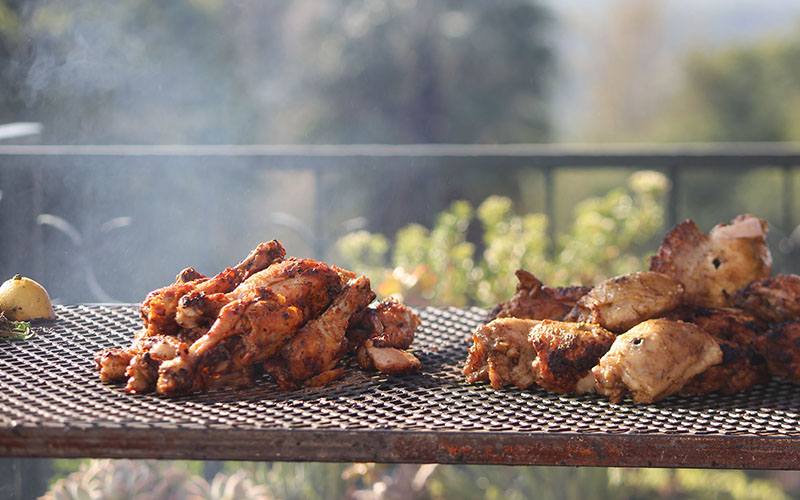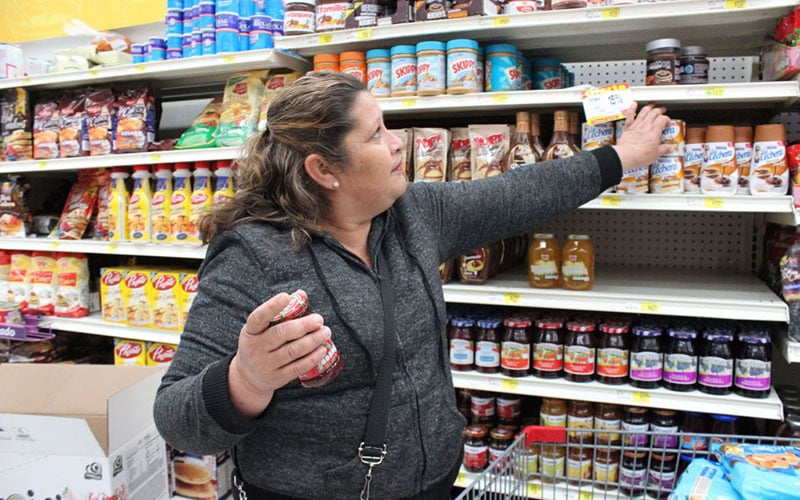
The cost of a typical Fourth of July cookout is about 17% higher this year than last, according to the American Farm Bureau Federaion, which said higher prices for meats were the biggest increases. (Photo courtesy U.S. Embassy South Africa)
WASHINGTON – The real fireworks for this Fourth of July weekend may not be bursting in air – they may be in the supermarket aisles.
The American Farm Bureau’s annual market basket survey of holiday food prices found that the cost of a cookout for 10 this year will be $69.68, a skyrocketing 17% higher than the same meal last year, which cost $59.50.
Agriculture and grocery officials attribute the increase to the same economic factors that have pushed inflation to the highest rate more than 40 years: higher costs for fuel, a tight labor market and supply chain problems, all of which combine to drive up the cost of living.
“One of our most important fuels is diesel, it is up double digits, and because of the increase of the cost to grow our food that’s one of the reasons you’re seeing these higher food prices obviously,” said Julie Murphree of the Arizona Farm Bureau Federation.
That’s driving up costs for grocers, too.
“The trucking system is affected by the price of gas and diesel fuel which is directly related to the cost of food and the food industry,” said Mark Miller, president of Arizona Food Marketing Alliance. It represents major grocery chains in Arizona like Bashas’, Fry’s and Food City.

The American Farm Bureau Federation’s annual survey of holiday food prices found the cost of a cookout for 10 this year will be $69.68, 17% higher than last year. Higher meat prices were a large part of the increase. (Graphic by Nikita Chaturvedi/Cronkite News)
While he could not speak to directly to costs for Independence Day get-togethers, Jerry Brown said there’s no question that prices are up and “overall food prices have impacted families throughout Arizona. Brown is director of public relations for St. Mary’s Food Bank, which he said has seen a surge in people needing help in the last three to four months.
“We have seen huge increases at the food bank, 70-75% over this time last year,” Brown said. “Our lines are very long, we are seeing over 1,000 people a day at our main facility in Phoenix, thousands more across the state every day.”
The farm bureau survey is based on Bureau of Labor Statistics data and information collected by 176 volunteer shoppers who price a set list of items in stores across the country. While Arizona has participated in the past, Murphree said it did not do so this year.
The shopping list envisions food for 10 for a typical summer cookout – burgers, potato salad, chips, sides, lemonade, ice cream and more.
The higher prices were driven largely by increases in the cost of meats. Ground beef and boneless, skinless chicken breasts were each up by a third, with 2 pounds of each costing and estimated $11.12 and $8.99 respectively, while the cost of 3 pounds of center-cut pork chops rose 31%, to $15.26.
Not every item was more expensive. The survey said potato chips were down 4.4%, to $4.71 for a 13-ounce bag; a pound of sliced cheese was down 12.8%; to $3.53, and the cost for 2 pints of strawberries fell 16.2%, from $5.30 last year to $4.44 this year.
The American Farm Bureau attributed the drop in strawberry prices to the other big factor for farmers, the weather. It said better weather conditions in fruit-growing regions such as California and Florida this year helped the strawberry crop.
The increase is a change from most years for the survey, which tends to show steady prices or only minor increases. Last year, the estimated cost of a Fourth of July cookout actually fell 16 cents, from $59.66 to $59.50, a fact trumpeted by the White House in a pun-filled tweet citing it as proof that “Biden’s economic plan is working and that is something we can all relish.” The White House had not tweeted about this year’s cookout costs as of Friday.
Murphree said farmers and grocers are subject to the same economic forces as everyone else.
“Just in general, even transportation and logistics aspect of it, that cost has increased and it’s obviously impacting you and I in the grocery store,” she said.
That was echoed by Miller, who said the supply chain, “like a spider web encompasses the globe, any disruption in that affects everything.”
“We’re the last step in the food ladder, everything is affected by the original commodity price, the processing as it moves through finished goods , soups, any type of product you would see in a can or bottle,” he said.
Miller said grocers are also having to compete for workers.
“There’s so much demand for personnel right now,” he said. “Everyone for every industry is competing to find the good people that are willing to work hard in their stores, in their warehouses, delivering food and beverages.”
Whatever the reason, Brown said increasing food prices – for the holiday and beyond – has many families worried.
“The rising cost of food, whether it be a Fourth of July cookout, or just day-to-day feeding families, has certainly impacted families, and sent more people to the food banks for help,” Brown said.


